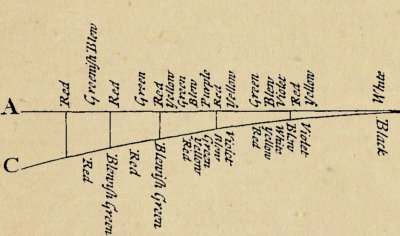Newton’s Optical Work

The early research programmes that led to his discovery that white light is composed of basic, primary coloured rays, are very different from what we now understand his scientific achievement to be. The route to his great discovery involved a radical series of experiments on his own eyes, which included staring at the Sun for extended periods. He also drew illustrations of trials where he placed various objects between his eyeball and his eyesocket, like his finger or a knife. Having become President of the Royal Society in the previous year, Newton published his book Opticks in 1704 (with further editions in 1706 and 1717). At the end of this text, he added a series of ‘Queries’, which in successive editions revealed his private scientific views on the nature and causes of light, life, electricity, magnetism and gravity. The vast and rich drafts of these Queries include fascinating views not normally associated with Newton, such as his thoughts on reproduction.
